News

2025.09.16
Notice
Edogawa Collection Pop-Up and Workshop Held at Ario Kasai: A Fun-Filled Day of Tin Keychains, Shimenawa Ornaments, and Beeswax Wraps
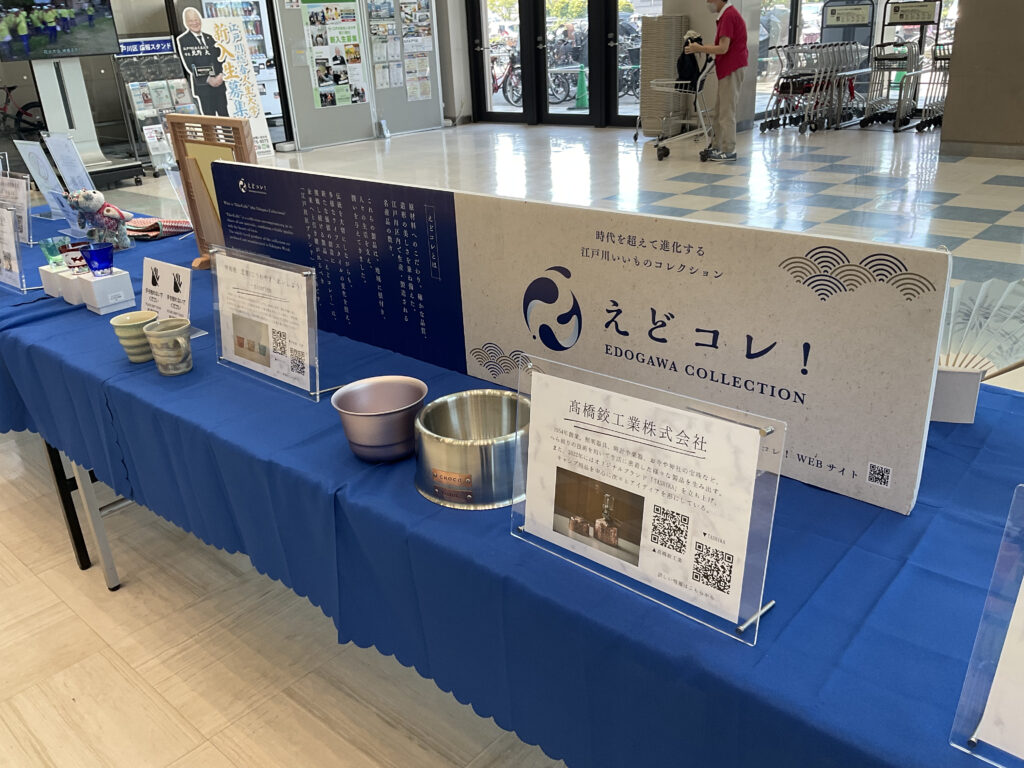
On Saturday, August 30, 2025, the Edogawa Collection Pop-Up & Workshop was held at Ario Kasai in Edogawa City.
A total of 14 Edogawa Collection businesses took part in the event. Alongside product displays and sales, three workshops were also held, offering visitors the chance to experience the traditions and skills of Edogawa up close. Below we report on what happened on the day, focusing on the workshops.
Local Mascot Edokin-chan Makes an Appearance!
On this late-August Saturday, the lingering summer heat had drawn many visitors to the air-conditioned comfort of Ario Kasai. Near the event space, Edokin-chan, Edogawa City’s goldfish mascot, made a special appearance, drawing a steady crowd of families with children.
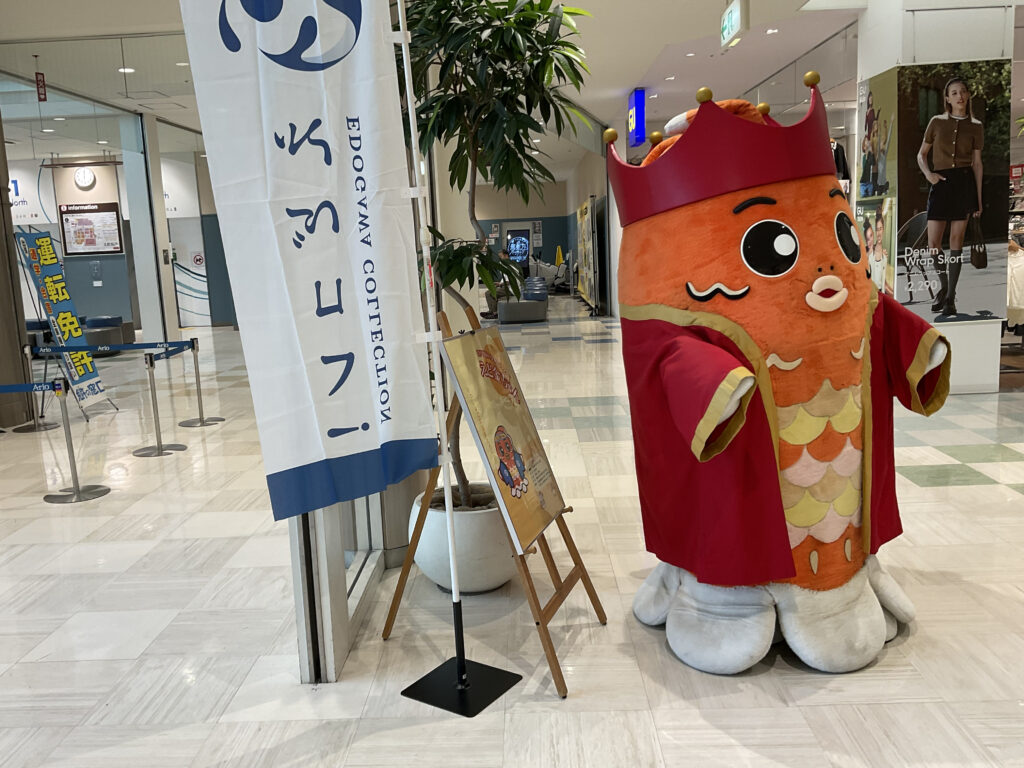
Edokin-chan, the official character of Edogawa City, was a hit with visitors. A long line formed for commemorative photos.
The pop-up shop featured a wide array of standout products from Edogawa Collection businesses. Some visitors shared their personal connections to each business, such as how they knew business owners, or how they enjoyed drinking Ogawa Industrial’s barley tea all the time.
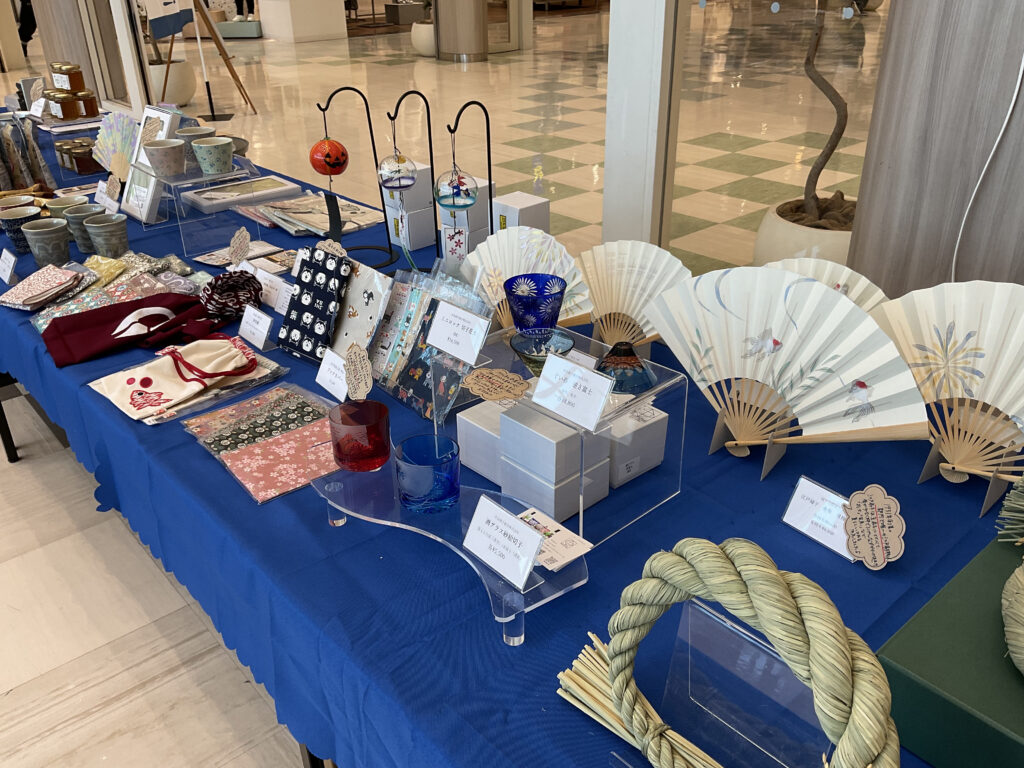
Traditional crafts like Edo sensu (folding fans) from Matsui Sensu Kobo and Edo glassware from Nakakin Glass drew many admiring glances.
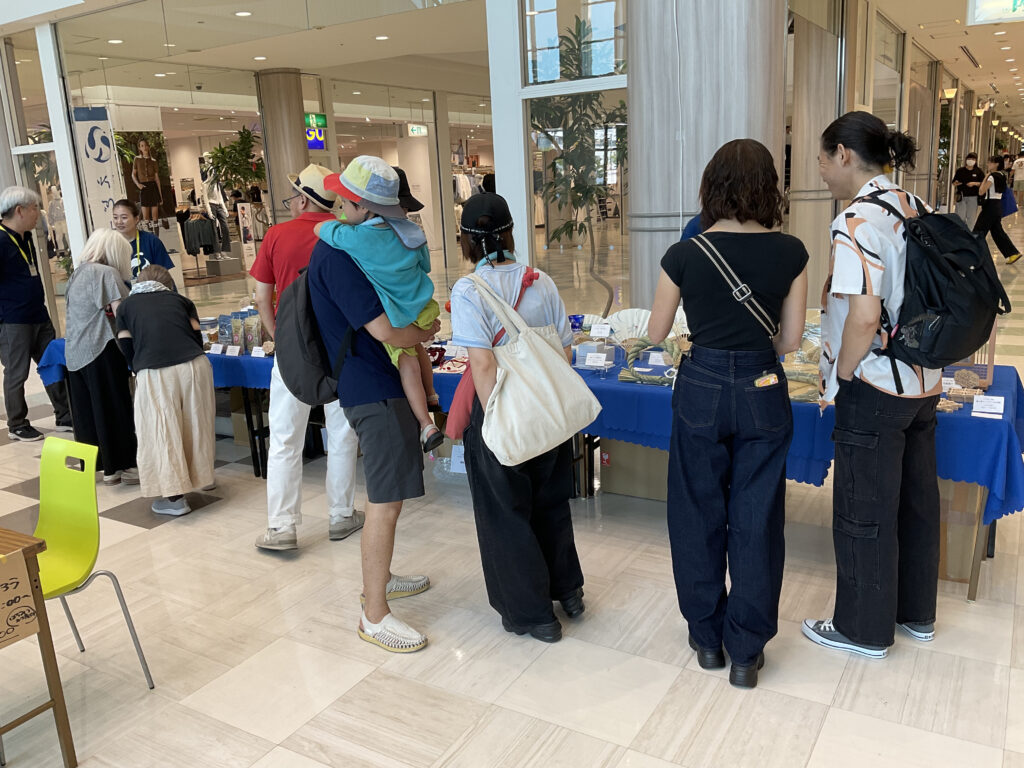
Visitors stopped to try out furin (wind chimes) and browse kits for making shimenawa (sacred straw ropes). Ogawa Industrial’s barley tea was a refreshing hit in the summer heat.
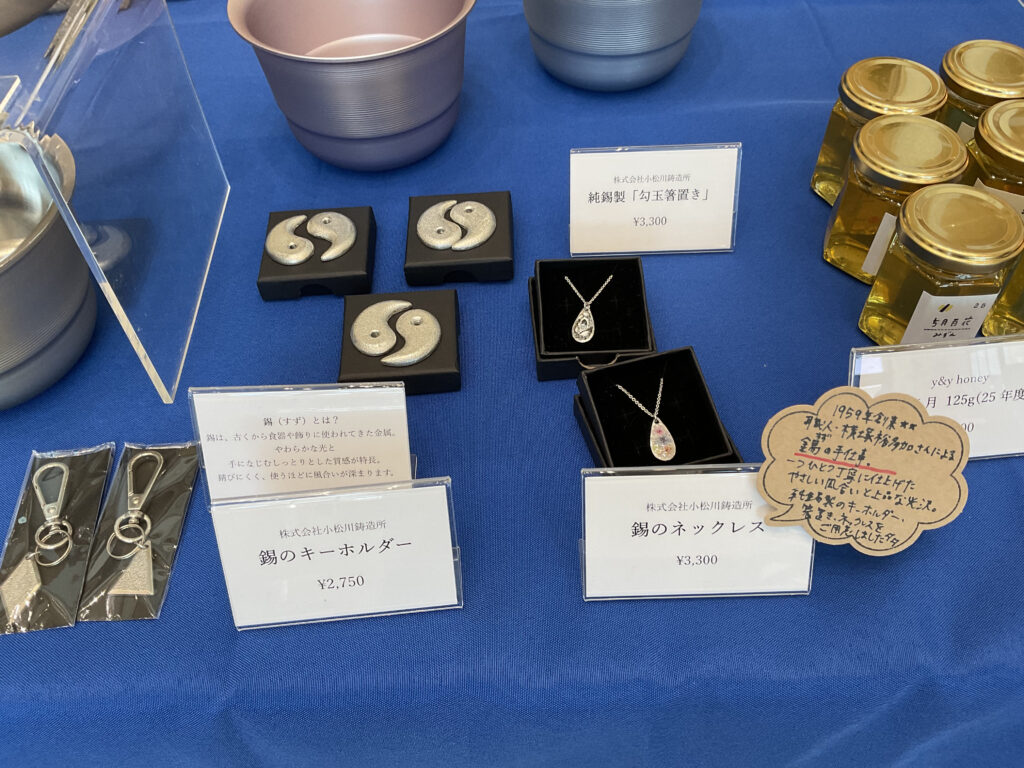
A woman shopping with her husband was drawn to a tin necklace from Komatsugawa Chuzosho. The soft sheen unique to tin proved irresistible.。
Tin Hedgehogs and Rabbits Are a Hit! Komatsugawa Chuzosho: Tin Animal Keychain Workshop
More popular than even the pop-up displays were the Edogawa Collection workshops, held simultaneously. This time, three businesses—Komatsugawa Chuzosho, Nawachu, and y&y honey—each ran three sessions, lasting around 45 minutes to one hour.
Komatsugawa Chuzosho, already drawing attention for their tin necklaces, led a workshop called “Tin Animal Keychain Workshop.” Participants poured molten tin into molds shaped like hedgehogs, rabbits, and squirrels, waited for them to cool, then drilled a hole for attaching a strap.
At one session around midday, a child joined to make a tin hedgehog. Once the metal cooled, a gleaming silver hedgehog appeared. After drilling a hole, the child chose a strap from among many colors and patterns to finish the piece.
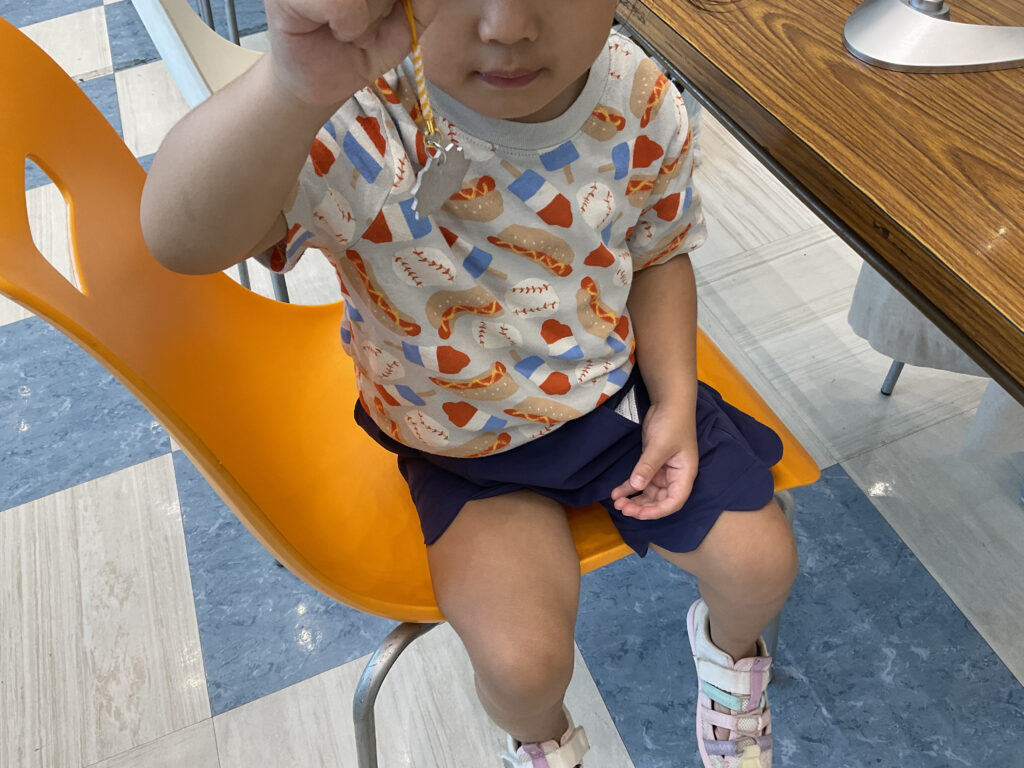
A delighted participant shows off their freshly cast tin hedgehog keychain.
Teamwork Is the Key: Nawachu’s Parent-and-Child Shimenawa Ornament Workshop
At a workshop hosted by Nawachu, a long-standing specialist in straw craft and shimenawa, parents and children worked together to make shimenawa ornaments. Participants split a bundle of straw into three, twisted two of the bundles together, and then wound them into a ring shape. The twisting required teamwork, and families took turns pressing and twisting the straw with great concentration.
One family of three divided up the tasks: the adults each held a twisted bundle while the child carefully braided them together. If loosened, the shape would unravel, so focus was essential. The final step: forming the bundle into a circle, securing it with string, and inserting decorative rice stalks.
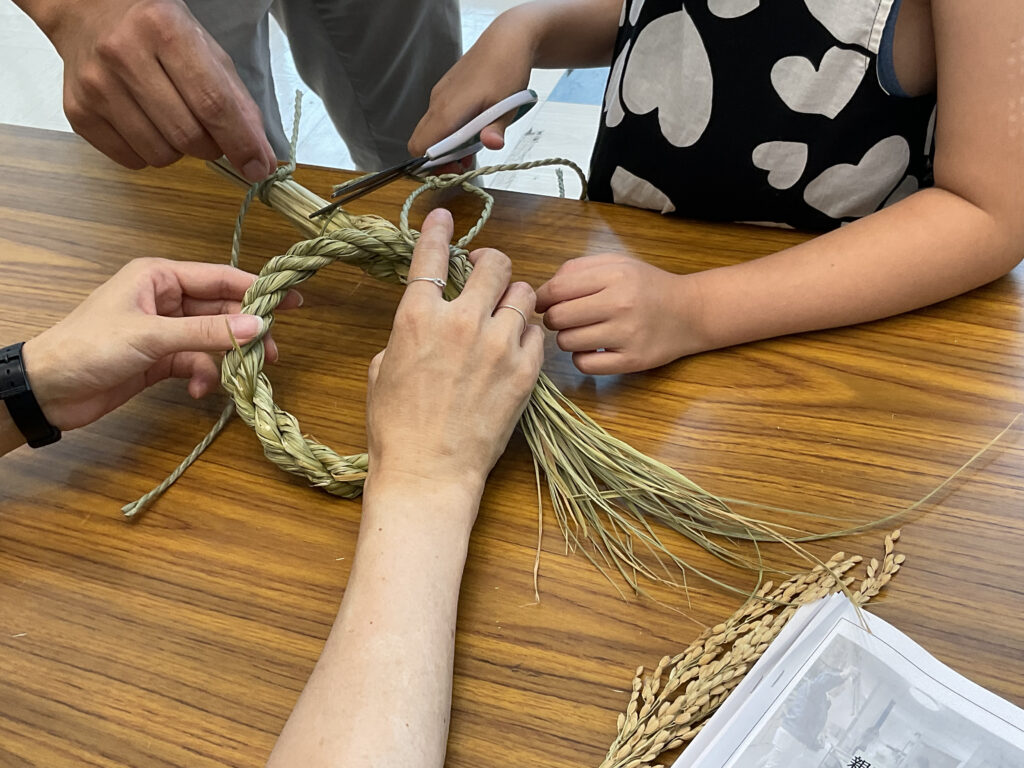
As the shape of the shimenawa began to emerge, the family worked together to adjust and refine it when sections loosened.
Afterward, Kubishiro-san of Nawachu gave a live demonstration of professional shimenawa-making. Wearing work gloves, he recreated the process on a straw mat, transforming bundles of straw into a finished piece before everyone’s eyes.
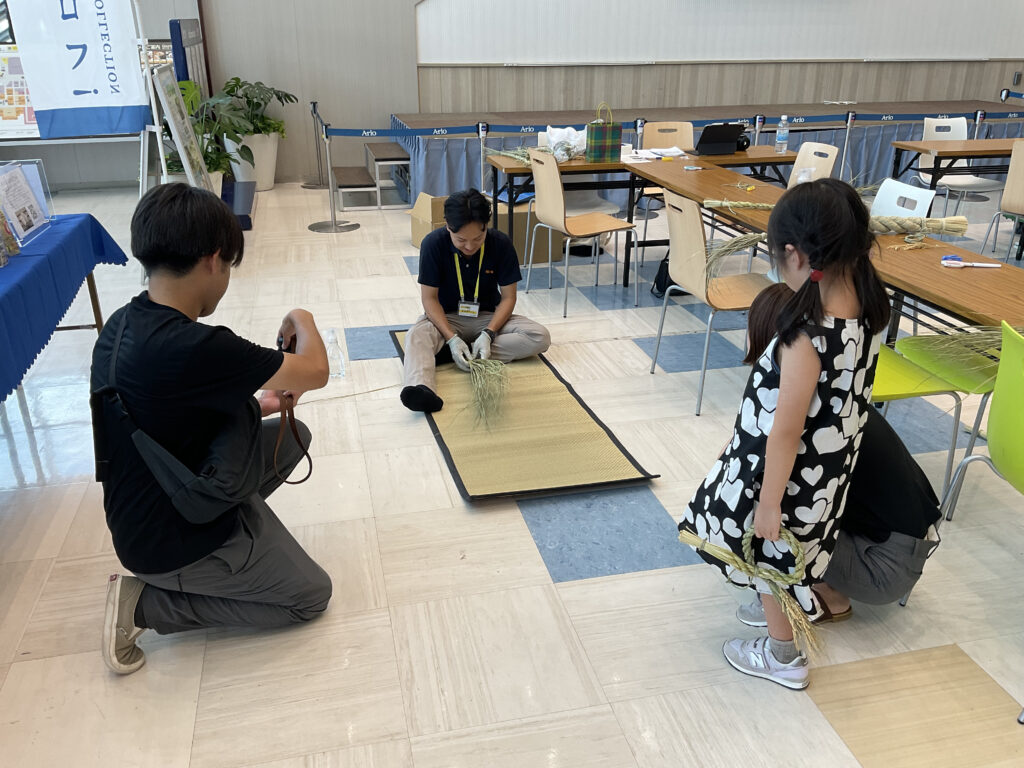
“When I make shimenawa by myself, I use my feet to hold down the straw,” said Kubishiro-san. Participants watched with interest as he demonstrated the rapid transformation from bundle to ornament.
Bonus Mini Jar of Honey Included!: y&y honey Beeswax Wrap Workshop
At the y&y honey workshop, participants created beeswax wraps, reusable food wraps made by infusing fabric with beeswax collected during honey production. These wraps have grown in popularity in recent years for being eco-friendly and reusable.
Participants used suminagashi (ink marbling) dyed cloths from Kusanagi Senshoku Kobo. Each person selected their favorite marbled cloth, placed beeswax chips on top, and carefully melted them using an iron and parchment paper.
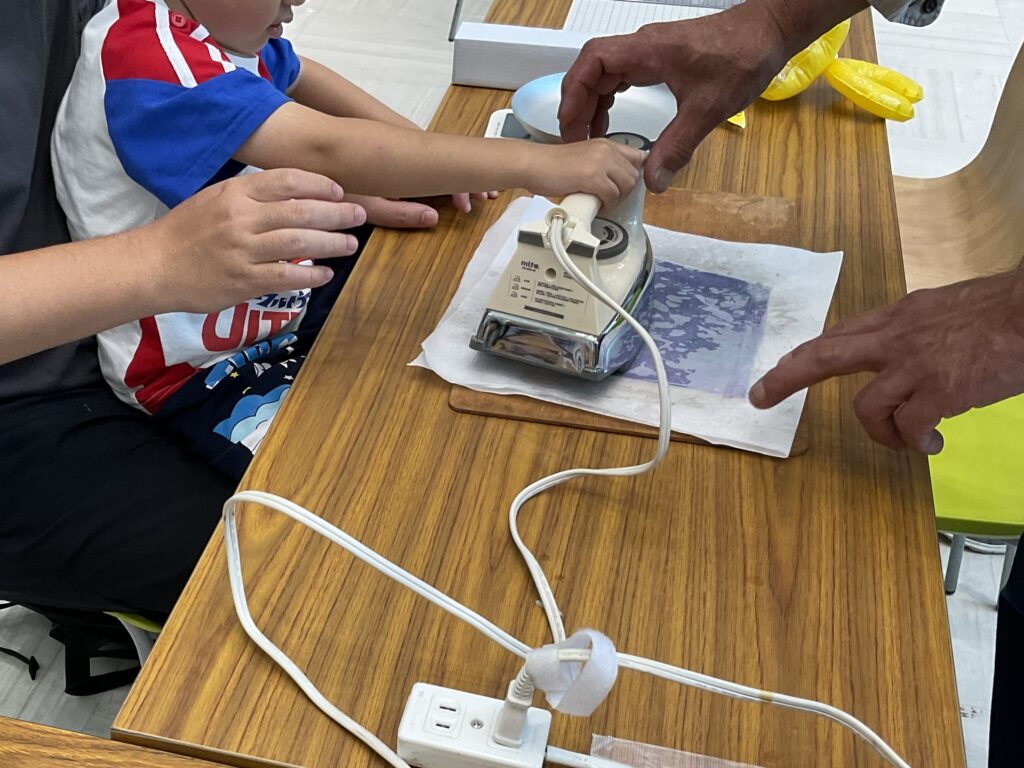
Taking care to avoid burns, participants used an iron to melt the beeswax chips, which soaked into the cloth as they turned to liquid.
Once the beeswax had melted and spread evenly across the fabric, it was left to cool and harden. As it set, the fabric stiffened, and peeling away the parchment paper revealed a finished beeswax wrap.
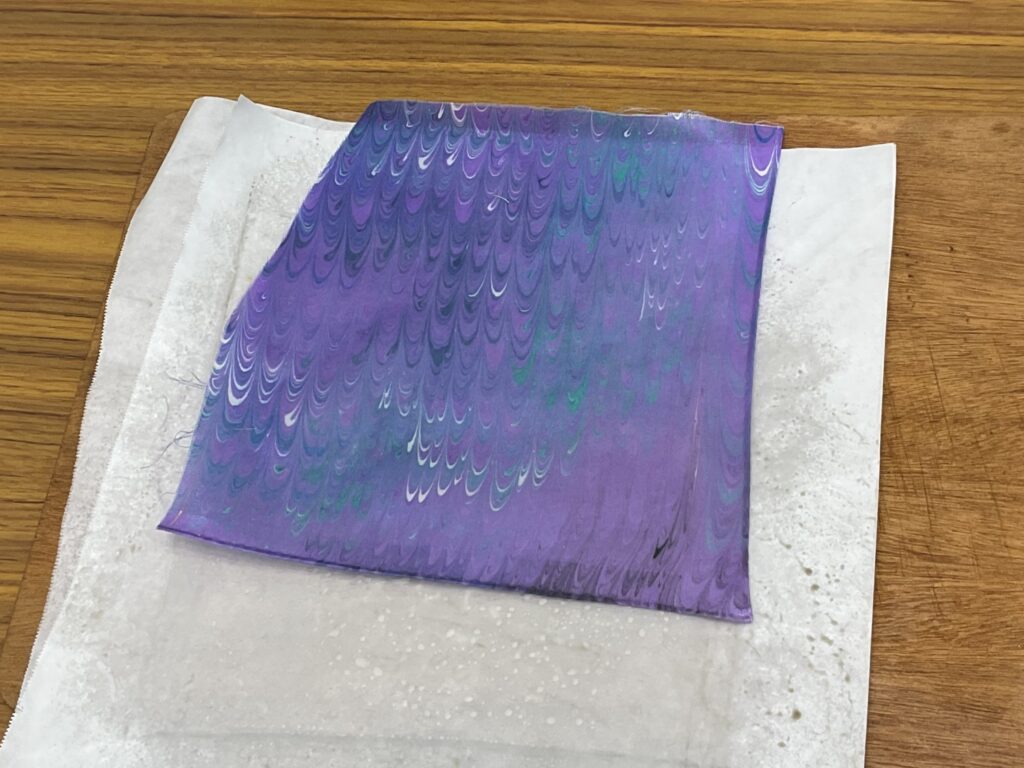
The completed beeswax wrap. The beeswax had hardened, giving the cloth a crisp, firm texture.
The finished wrap can be used to wrap vegetables or cover bowls of food. To clean, simply wipe away any residue with a damp cloth.
This collaboration brought together fabric dyed by Keiko Kusanagi of Kusanagi Senshoku Kobo—a recipient of the Tokyo Meister award for outstanding technical skill—with beeswax produced by Edogawa City’s own honeybees, resulting in an eco-friendly, locally made item.
With that, the Edogawa Collection Pop-Up & Workshop event at Ario Kasai came to a close.
The Edogawa Collection will continue sharing the charm and craftsmanship of local creators and their products. Be sure to check for upcoming events!
Writing: Kato Yuri
